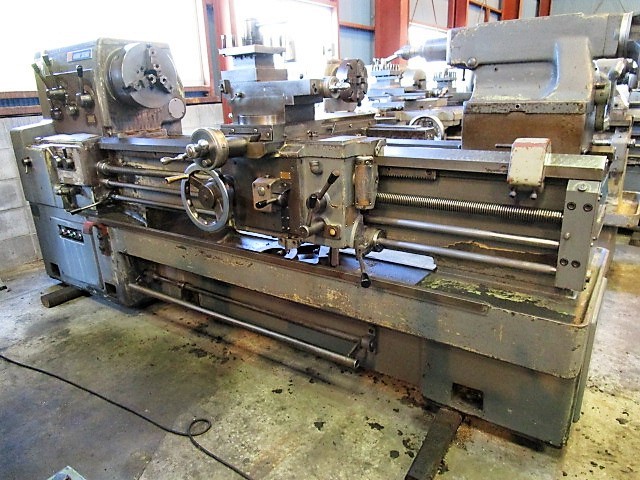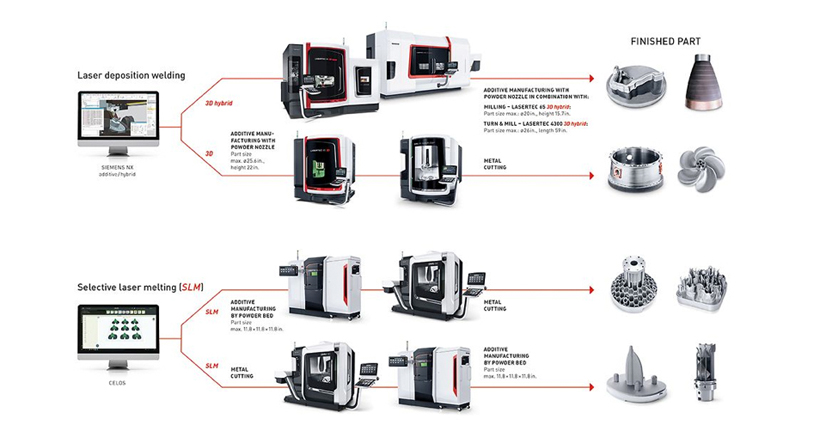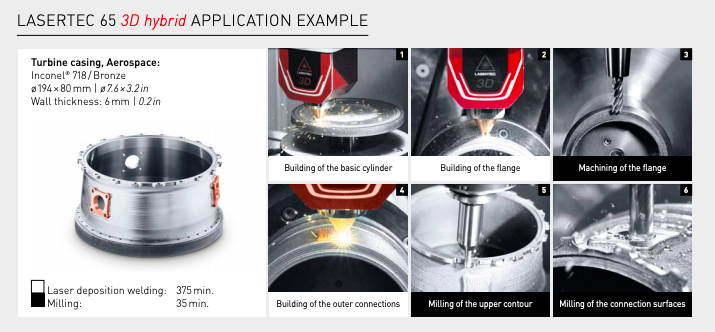DMG Mori is one of the largest machine builders worldwide, generating about $3 billion in revenue each from its Japanese and German divisions. Though its position in the 3D printing industry is comparatively limited, it is growing, which is why we thought we’d take a look at DMG Mori its role in additive manufacturing (AM).
DMG Mori began as textile manufacturing equipment maker Mori Seiki Co. in 1948, which ultimately led to the production of machine tools by 1958, from which it has not since diverted. Early machines included manually controlled lathes before the introduction of numerically controlled lathes, then vertical and horizontal machining centers. These various machine tools continued to improve up to the present day.
An important component of DMG Mori’s current operations is its German division, DMG Mori AG, which first became a partner of the Japanese company in 2009. The largest manufacturer of cutting machine tools in Germany, DMG Mori AG was founded as GILDEMEISTER by Friedrich Gildemeister in 1870 and, by 1910, was a mass manufacturer of turret lathes, multi-spindle automatic lathes, milling machines, and vertical and horizontal milling machines.
While new automation features and orders from a quickly industrializing Soviet Union allowed the German company to succeed during the depression of the 1920s, the two World Wars saw Gildemeister nearly shut down by Allied forces twice. After World War Two, the company began to boom as the German economy recovered, with Gildemeister ultimately releasing numerically controlled machine tools in the 70s. From the 60s through the 90s, the company made important acquisitions. By the time of the 1995 acquisition of Deckel Maho AG, it was an established European powerhouse in manufacturing machine tools.
As Mori Seiki’s partnership Gildemeister, deepened and the Japanese company increased its ownership shares in the German manufacturer, it changed its name to Deckel Maho Gildemeister (DMG) Mori in 2013. By 2016, the Japanese and German divisions were officially integrated into a single conglomerate.
It wasn’t until 2015 that DMG Mori entered the AM market with its first hybrid manufacturing system, the LASERTEC 65 3D, which incorporated a directed energy deposition (DED) head into a five-axis milling machine. The system features a 2.5-kW diode laser for DED at rates of up to 1 kg/h. Since then, the company continued to release hybrid machines. In 2016, the LASERTEC 4300 3D was added to its portfolio, which included DED, 5-axis milling and turning functionality. Its most recent hybrid system is the LASERTEC 125 3D Hybrid, unveiled at Formnext in 2019.
In 2017, DMG Mori acquired a majority stake in early metal powder bed fusion (PBF) company Realizer and released its first PBF 3D printer, the LASERTEC 30 SLM, to the market. This was followed up by the LASERTEC 12 SLM, which is smaller and designed specifically for thin-walled components.
Printed metal parts typically require heat treatment, which hardens the metal, before other post-processing operations can be performed, meaning that hybrid machines can’t necessarily move directly from printing to machining without heat treatment in between. However, the newest LASERTEC 125 3D hybrid can deposit material with a hardness of up to 63 HRC, DMG Mori suggests allows users to skip the heat treatment step when harder metals are used.
DMG Mori bills all of these systems as part of a larger collection of four process chains. While the hybrid systems are able to perform all of the additive and subtractive functions necessary for 3D printing, the SLM machines and the LASERTEC 65 3D (a pure DED system) can be complemented with CNC machines offered by the company. Workpieces 3D printed with these systems can be finished to proper tolerances and surface quality on a milling machine or previously milled base plats and bases can be have objects printed onto them without the need for support structures.
Now that the Japanese conglomerate is firmly settled in the additive space, it has begun offering AM consulting services. This includes verifying the printability of parts, redesigning parts for AM, engineering new components and product categories, simulation and topology optimization, 3D printing of prototypes and small series, courses and training, and consultations dedicated to overall strategy.
Because DMG Mori has developed laser PBF, DED and hybrid machines, it would appear to be an important contender in the AM space. Perhaps, in the near future, we’ll see the company release a hybrid PBF system, like Matsuura offers, or laser-based machining, like Trumpf. As impressive as hybrid 3D printing technology appears to be from the outside, we will have to see more success stories coming from industry before we can truly assess its place in the larger AM and manufacturing markets.
Subscribe to Our Email Newsletter
Stay up-to-date on all the latest news from the 3D printing industry and receive information and offers from third party vendors.
Print Services
Upload your 3D Models and get them printed quickly and efficiently.
You May Also Like
The Market and Industry Potential of Multi-Material 3D and 4D Printing in Additive Electronics
Additive manufacturing leverages computer-based software to create components for products by depositing either dielectric or conductive materials, layer by layer, into different geometric shapes. Since its birth in the 1980s,...
3DPOD 262: Bio-inspired Design for AM with Dhruv Bhate, Arizona State University
Dhruv Bhate is an associate professor at Arizona State University. There, he looks at structures, materials, and design. Previously, he worked at PADT as well as in the semiconductor and...
3DPOD 261: Tooling and Cooling for AM with Jason Murphy, NXC MFG
Jason Murphy´s NXC MFG (Next Chapter Manufacturing) is not a generalist service; instead, the company specializes in making tooling. Using LPBF and binder jet, the company produces some of the...
3DPOD 260: John Hart on VulcanForms, MIT, Desktop Metal and More
John Hart is a Professor at MIT; he´s also the director of the Laboratory for Manufacturing and Productivity as well as the director of the Center for Advanced Production Technologies....




































